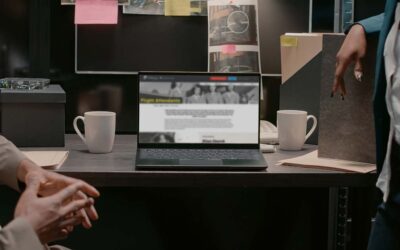The Difference Between Museum Digital Programs and Projects

Rachael Cristine Woody
If digital projects haven’t completely infiltrated your everyday museum work, count yourself in the minority. Due to the COVID-19 global pandemic attention on museum digital programs has surged.
As a result, museum digital programs are in need of a review and overhaul as the momentum and demand for digital projects increases. In order to increase our efficacy, it’s important to take a moment to reflect on how we distinguish museum digital programs from digital projects, what expectations may have changed due to COVID-19, and re-affirm the important pieces that go together to form a successful digital project. This mini-series will have three parts: The Difference Between Museum Digital Programs and Projects (this post), How COVID Has Changed Museum Digital Projects Forever, and The 4 Most Important Museum Digital Project Components.
Digital Program vs Projects
First, it’s important to distinguish what’s a “program” and what’s a “project”. This is not specific to digital programs and projects, though it is applicable here. Here’s how I breakdown programs versus projects so that we’re all working with the same definitions:
- Programs
-
- Perennial: The work done under the auspices of the program is perennial or evergreen work. There’s no end date to this work, it’s ongoing.
Example: Supporting K-12 curriculum or docent training and tours
-
- Outcome-driven: The work conducted as part of the program is measured by outcomes (macro) not deliverables (micro).
Example: The outcome (or goal) of the museum building K-12 content and experiences led to a great level of inclusion in local K-12 curriculum; which led to an increase in student interest and knowledge of the museum’s subject matter.
-
- View, plan, and measure at the macro-level: A program is best viewed, planned, and measured at a higher-level than a project. The details of the activities that make up the program aren’t analyzed at the same level as a project, but sill yield valuable data.
TL;DR: Programs are perennial, outcome driven, and are worked with at the macro-level.
- Projects
-
- End: Projects have a definitive start and end date because the goal has been achieved and there isn’t a reason to keep the work ongoing.
Example: A collection of tea cups need to be photographed and cataloged in the Collections Management System (CMS) so that they can be removed from display and restored.
-
- Deliverable-driven: The project is measured by quantifiable results and the success of a project is determined by whether or not it meets project deliverables.
Example: The project ends and is considered successful because 12 tea cups have been photographed, cataloged, and sent to the conservator.
-
- Program activities: Projects can be a part of larger program activities as long as they are not considered ongoing.
Example: While photographing, cataloging, and restoring museum objects are part of the museum’s ongoing work; the specificity and micro-level of the tea cup restoration project is what makes it a project and not a program.
TL;DR: Projects have an end date, are measured in deliverables, and can be included in larger program activities.
Next Week
Next week we’ll continue this miniseries with an evaluation of How COVID Has Changed Museum Digital Projects Forever.
Additional Reading
TrendsWatch 2021: Digital Awakening
The Critical Difference Between Museum Deliverables and Outcomes
LAMs are More Alike Than Different: Physical vs Digital Nature of the Work
Prioritize These Remote Museum Projects During Coronavirus—Part 1
Prioritize These Remote Museum Projects During Coronavirus—Part 2

Rachael Cristine Woody
Expert Rachael Cristine Woody advises on museum strategies, collections management, and grant writing for a wide variety of clients. In addition to several titles published by Lucidea Press, Ms. Woody is a regular contributor to the Think Clearly blog. Register here for her upcoming webinar, “Museum Digital Project Fundamentals” on July 28, 2021. And learn about Lucidea’s Argus solution for powerful and innovative museum collections management.
Similar Posts
An Introduction to Scrollytelling for Museums
Discover how museums use scrollytelling and digital storytelling platforms to create immersive narratives. This introduction explores key concepts and approaches to interactive storytelling.
Exploring Self-Determinate Multiple Pathways: An Example of Digital Storytelling
Discover how self-determinate multiple pathways offer flexible interactive storytelling in museum exhibits. Learn from the Tenement Museum’s ‘Your Story Our Story.’
Digital Museum Storytelling Example: A Look at Self-Determinate Linear Pathways
Self-determinate characteristics on a linear pathway go beyond brief sidebar topics and instead offer alternative ways to navigate the linear pathway.
Digital Storytelling in Museums: The Prescriptive Linear Pathway in Action
Rachael Woody emphasizes that storytelling is key to engaging audiences with collections. One effective approach? The prescriptive linear pathway—a simple yet powerful method for guiding visitors through digital exhibits.






Leave a Comment
Comments are reviewed and must adhere to our comments policy.
0 Comments